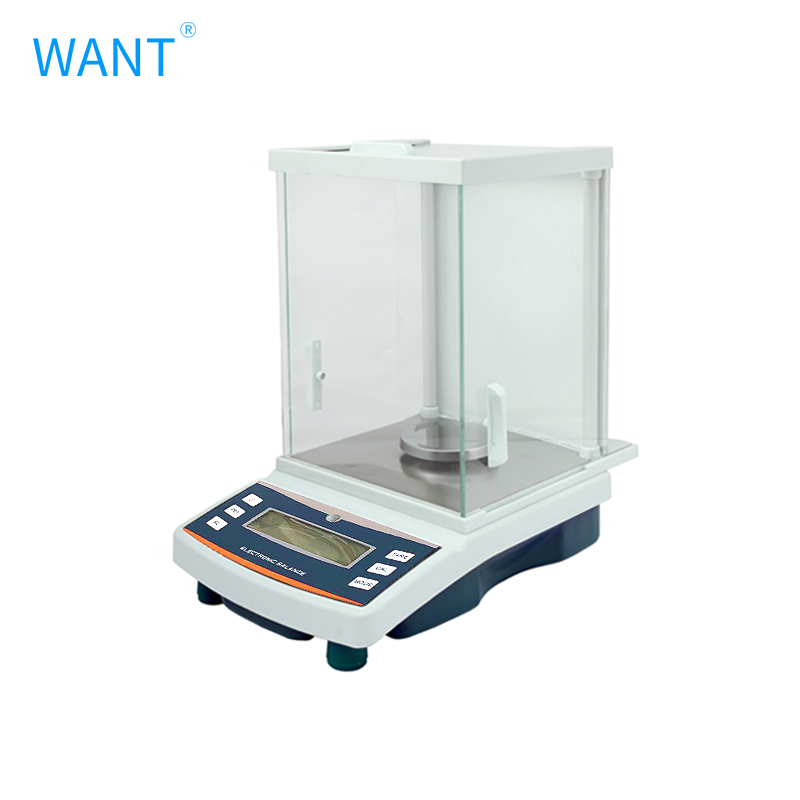Show you how to measure a fixed density with a Laboratory Electronic Balance
 Oct 27, 2022|
Oct 27, 2022| View:907
View:907With the development of society, the laboratory has become a necessary place for all manufacturers to develop and research. TheLaboratory Electronic Balanceis the most common instrument in the laboratory. In routine laboratory measurement and analysis of substances, the density of solids is often measured using Laboratory Electronic Balance and density test kits. The following will explain in detail for you Laboratory Electronic Balance measurement of fixed density method.

1. Firstly, the principle of measuring solid density with Laboratory Electronic Balance is introduced.
(1) the density of an object is the ratio of its mass to its volume;
(2) density measurements are based on the Archimedes principle, which is explained by the fact that each solid immersed in a liquid loses as much weight as the liquid it displaces;
(3) the density of a solid is usually measured using a liquid of known density (e. g., water or ethanol) as an auxiliary liquid by weighing the mass of the solid to be measured in air and then in the auxiliary liquid and then calculating its density.
2. Preparation before measurement.
(1) select the right electronic balance. The precision of the electronic balance should be selected according to the precision of the density data, and the capacity of the electronic balance should be selected according to the volume and weight of the sample. It is necessary to warm up the electronic balance for a long time before testing and make the necessary correction to ensure the accuracy of the measurement data
(2) select suitable test components, such as some large volume; the weighing room can not be placed in the material to choose hanging test components;
(3) select suitable samples to be tested. Considering the influence of the surface tension of water, it is suggested that the sample weight should be more than 1g for the accuracy of density measurement. To improve the measurement accuracy, it is suggested to select samples with regular shapes and small Surface roughness;
(4) choose the suitable assistant liquid. Generally can choose water, alcohol, or other. The choice of test liquid should be based on the specific properties of the test samples, such as being easy to react with water, can choose alcohol as a test liquid.
3. Follow the steps to make the measurements.
(1) opening the left or right door of the electronic balance to remove the scale plate and inserting the density bracket into the electronic balance;
(2) placing the bracket at a suitable position above the bracket to ensure that the bracket does not come into contact with the bracket;
(3) place the Beaker in the center of the bracket. A thermometer is inserted in the Beaker to measure the current temperature of the liquid;
(4) a reference liquid (usually water or alcohol) of known density is injected into the Beaker to ensure that the solid to be measured can be completely immersed in the liquid of more than 1cm;
(5) place the hanging basket on the fixed bracket to ensure that there are no air bubbles on the surface and that it does not touch the Beaker or thermometer;
(6) switch on the electronic balance;
(7) close the air door and peel off the weight;
(8) opening the windproof door of the electronic balance and placing the measured solid in the scale plate;
(9) turn off the electronic balance windbreaks; after the electronic balance is stabilized, the electronic balance will automatically record the weighing results;
(10) open the electronic balance windscreen door, remove the measured solid, close the windscreen door and peel the weight;
(11) open the electronic balance windproof door to place the measured solid in the scale plate and ensure that no bubbles adhere to the solid surface;
(12) close the windproof door of the electronic balance; after the electronic balance is stabilized, the electronic balance will automatically record the weighing result;
(13) calculate the density of the solid according to the density formula.
The above is the Laboratory Electronic Balance measurement of the fixed density method, and I hope this will help you.










